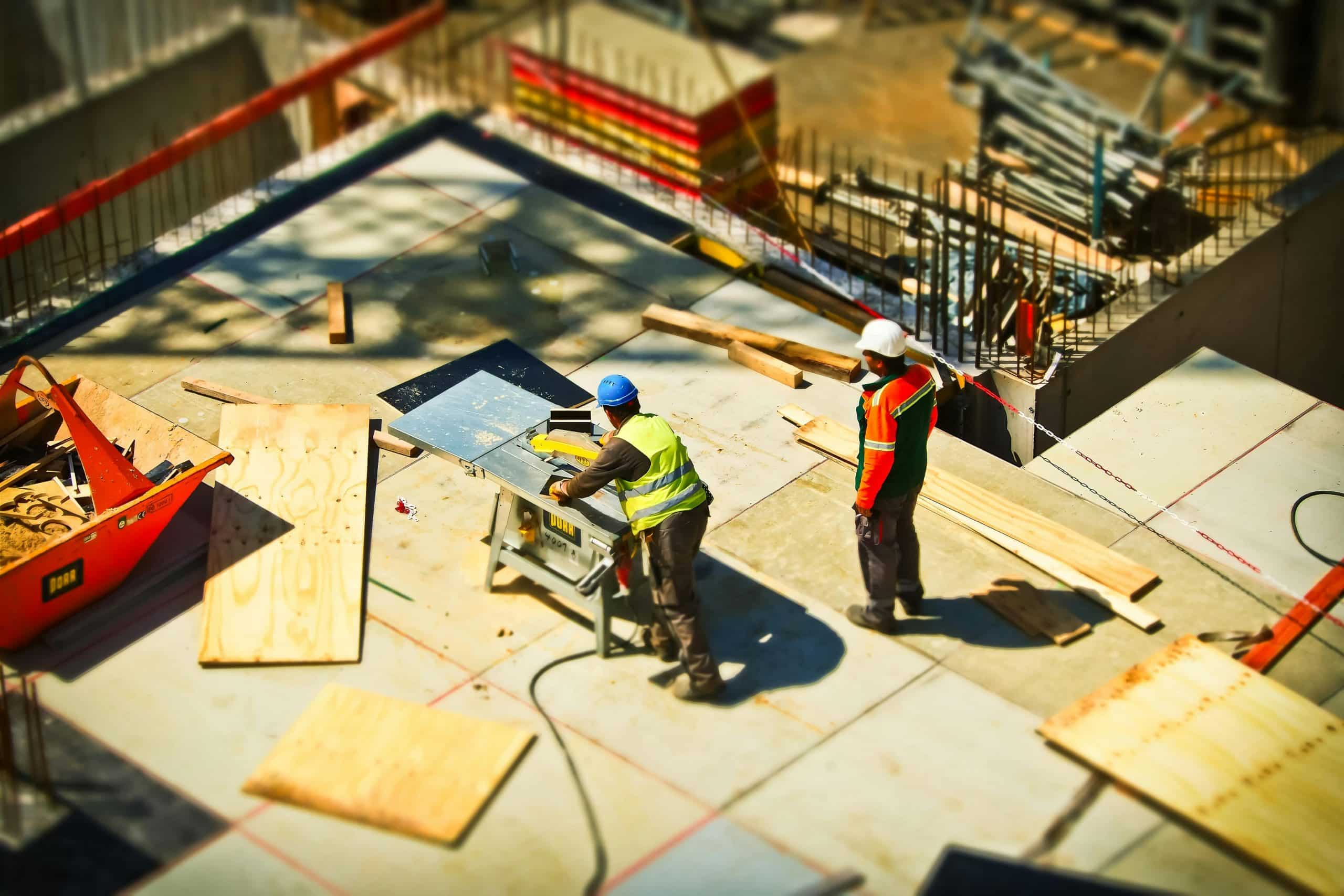What Are the Latest Developments in High-Strength, Low-Impact Construction Materials?

In the relentless pursuit of a more eco-friendly future, the construction industry is constantly evolving. The development of sustainable, high-strength materials is key to reducing the carbon footprint of the built environment. In this article, we will explore the latest advancements in this field, from the revival of traditional methods to cutting-edge innovations.
Harnessing the Power of Bamboo
Emerging as a frontrunner in sustainable construction, bamboo is no longer just a decorative element. Its usage has evolved over the years, proving to be a solid, eco-friendly substitute for traditional materials.
A découvrir également : How to Optimize the Acoustic Design of Residential Developments for a Tranquil Living Environment?
Bamboo, a rapidly renewable resource, generates large amounts of oxygen and absorbs four times more carbon dioxide compared to hardwood trees. Moreover, its tensile strength is on par with steel, making it a robust, yet ‘green’ material for construction.
Cutting-edge research is currently exploring methods to enhance the inherent attributes of bamboo further and make it more versatile. Innovations in processing techniques are making it possible to create engineered bamboo products like laminated bamboo and bamboo scrimber. These products offer the same consistency and functionality as conventional wood products but with a much lower environmental footprint.
A lire aussi : What Are the Key Considerations When Implementing Smart Grids in Real Estate Developments?
The Revolution of Recycled Concrete
Concrete, although an essential building material, is one of the largest sources of carbon emissions in the world. The construction industry is therefore revolutionising its approach to concrete, turning to recycled concrete as a viable, more environmentally-friendly alternative.
Recycled concrete is produced by crushing waste concrete to reuse as aggregate in new concrete mixtures. This process reduces the demand for extraction of natural resources and the energy associated with the production of new concrete.
Not only does recycled concrete promote a circular economy in the construction industry, but it also delivers similar, if not superior, mechanical properties compared to traditional concrete. Research is ongoing to further enhance the performance of recycled concrete and make it a standard construction material.
Wood-Based Materials: A Sustainable Alternative
Historically, wood has been a dominant material in construction. However, over-exploitation led to severe deforestation, pushing the industry towards concrete and steel. The present day scenario is witnessing a renaissance of wood in the form of engineered wood products.
Engineered wood, such as cross-laminated timber (CLT) and glued laminated timber (Glulam), is making a significant comeback. These innovative wood-based materials are not only high-strength and versatile but also have a much smaller environmental footprint compared to concrete and steel.
The production of engineered wood involves bonding together layers of lumber under heat and pressure. This process enhances the strength and stability of the final product, making it suitable even for high-rise buildings. Studies have also shown that wood-based buildings have a positive effect on the human psyche, promoting well-being and productivity.
Bio-Based Materials: A New Wave of Green Construction
The construction industry is also witnessing a surge in the use of bio-based materials. These are materials derived from renewable biological resources like plants and animal residues.
One such innovative material is Mycelium, which is essentially the root structure of mushrooms. Mycelium-based materials are grown by mixing agricultural waste with mushroom spores. The resulting material is not only strong and lightweight but also has excellent insulation properties.
Another promising bio-based material is algae. Algae-based materials are highly sustainable as they absorb carbon dioxide for growth and can be harvested without negative environmental impacts. Researchers are exploring the use of algae in construction for insulation, cladding, and even energy production.
Reducing Carbon Footprint Through Advanced Design Techniques
While material innovation forms a crucial part of the sustainability equation, advanced design techniques also play a pivotal role. This involves designing buildings and structures in a way that reduces the amount of material and energy required.
Building Information Modeling (BIM) is one such technique that allows for more efficient planning, design, construction, and management of buildings. By using BIM, architects and engineers can create detailed 3D models to simulate the construction process and detect any potential issues early on.
Another promising design approach is the concept of ‘Passive Houses’. These are buildings designed to achieve extreme energy efficiency, thereby reducing the carbon footprint significantly. The design principles of passive houses revolve around superior insulation, airtight construction, and advanced window technology.
In conclusion, the construction industry is undergoing a paradigm shift towards sustainability. The development and adoption of high-strength, low-impact materials and advanced design techniques are paving the way to a greener built environment. While challenges remain, the progress made is encouraging and sets a positive trajectory for the industry’s future.
Prefabricated Construction: An Efficient Approach
Another significant development in the construction industry involves the use of prefabricated or modular construction. This method involves constructing parts of the building off-site and then assembling them on-site. The off-site production allows for precision and quality control, and also reduces waste, making it a more sustainable method.
In addition to being eco-friendly, modular construction delivers several benefits such as reduced construction time, cost-effectiveness, and flexibility. It allows for mass production of standardized components, leading to economies of scale and reducing the overall project timeline. Moreover, prefabricated buildings can be taken apart and reassembled, allowing for architectural flexibility and adaptability.
Startups and scaleups are showing an increasing interest in this innovative construction method, further driving its development and adoption. As technology continues to progress, it’s anticipated that the use of data-driven designs and automated manufacturing processes will make modular construction even more efficient and sustainable.
Nanomaterials: The Future of Green Construction
Nanotechnology, the manipulation of matter on an atomic and molecular scale, is poised to revolutionize the construction industry. Nanomaterials possess unique properties, such as high strength and low weight, making them ideal for use in construction.
One prominent example of a nanomaterial being used in construction is carbon nanotubes. These tiny cylinders of carbon atoms are incredibly strong and light, and can be used to reinforce materials like concrete and steel, enhancing their strength while reducing their weight.
Other nanomaterials being explored for use in construction include nano-silica (to improve the strength and durability of concrete), nano-titanium dioxide (for self-cleaning surfaces), and nano-clay (for enhanced barrier properties in coatings).
The use of nanomaterials in construction not only leads to stronger and more durable structures, but it also contributes to sustainability. Nanomaterials can help reduce energy consumption during the manufacturing process and improve the energy efficiency of buildings by providing better insulation and creating self-cleaning surfaces.
Conclusion: Building a Sustainable Future
The construction industry is making significant strides towards a more sustainable future. The latest developments in high-strength, low-impact construction materials, combined with advanced design techniques, are enabling the creation of eco-friendly buildings that reduce the environmental impact and carbon footprint.
From the use of rapidly renewable resources like bamboo and bio-based materials to the adoption of recycled concrete and engineered wood, the industry is shifting towards more sustainable construction practices. The utilization of innovative technologies like nanotechnology and modular construction is further driving this shift, offering unprecedented opportunities for green building.
However, it’s important to remember that this is just the beginning. As technology continues to advance, so will the possibilities for sustainable construction. Construction companies, startups, scaleups, logistics, manufacturing, and all stakeholders have a crucial role to play in this journey towards sustainability.
The potential for reducing energy consumption, increasing energy efficiency, and creating a more sustainable built environment is enormous. While there are challenges to overcome, the progress being made is promising. The future of the construction industry certainly looks green.
